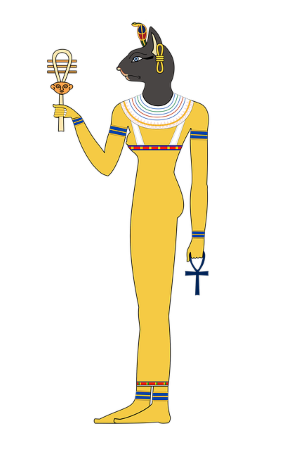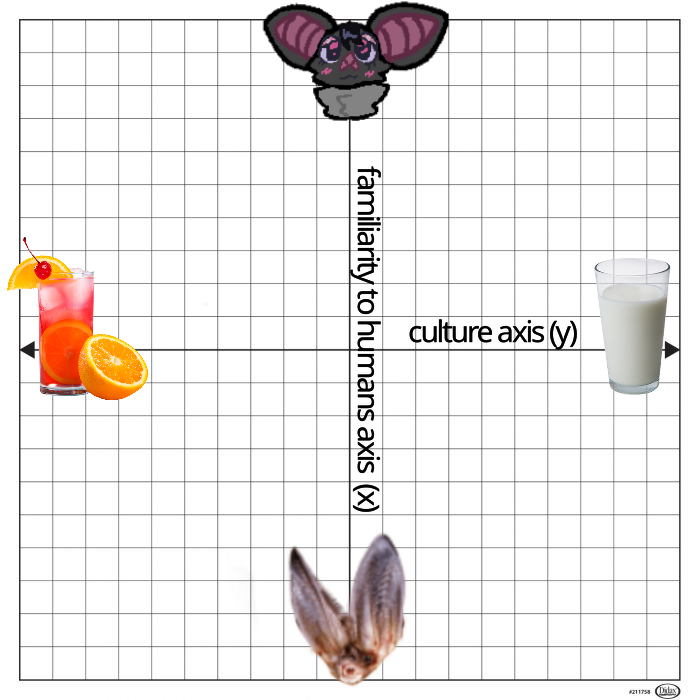The "Bat-ness" Axis: What's the Deal with how Humans Draw & Design Stuff that Isn't Them?
By Quinn "Antonio" G0reH0und.
So, you may be wondering what the first part of the title of this article exactly means. The other night, I decided to take a look at the internet to see how other furry artists draw their bat characters, as I have a bat character I enjoy drawing myself. As I browsed the various images, I found an interesting dichotomy with the multitude of drawings and character designs. This is where the "Bat-ness" Axis comes into play! I like to believe that there is an ascending scale of how familiar we draw and design not just anthropomorphized animal characters, but also generally non-human characters, such as aliens in works of science fiction.
Some of the characters I saw were very bat-like, having arms with elongated fingers and a thin flesh screen in between these fingers, and more generally anatomical bat features. I also noticed a lot of the characters had more classically "furry" appearances, with some of them looking a bit more like rabbits or a feline or canine with dragon wings.
I enjoy both interpretations, but it got me thinking about the ways that human artists interpret animals like bats, that aren't as commonly drawn in an anthropomorphized style as animals like cats or dogs. I also see a similar phenomenon with anthro fish and bugs, as these are animals that we, as human artists, can take more creative liberties with, as they are so far removed from what we, as humans, look like, and also because of the small volume of these sorts of animals being anthropomorphized throughout human history.
 |  |
examples of anthropomorphized feline and canine "characters", Ancient Egyptian gods Anubis and Bestet, respectively.
I think a similar sort of familiarity and likeness axis can also be applied to alien and creature designs in books and film, as mentioned previously.
For example, If we take a look at some of the alien species in an early science fiction program like Star Trek: The Original Series, we see a lot of very human looking species. This is of course largely because of production costs and the fact that a lot of the types of makeup, costume prosthetics, and more "cosplay-y" costume technology that would be used in the Star Trek series and movies to follow TOS wasn't invented yet! (it took the makeup artists 45 extra minutes to apply Spock's ears onto Leanord Nimoy, so they weren't gonna do anything crazy!) But it's also due to the fact that Star Trek was a very early piece of science fiction film, and for the time, its interpretations of what aliens could look like were pretty ground-breaking, but if we look at them now, and especially when we compare them to more recent Star Trek alien designs, we see them as very much as campy, dated, and unrealistic depictions of what aliens could look like.
And if we look at an even older example of an early science fiction television, Captain Video and His Video Rangers, which featured barely any aliens. it's like comparing a glass of warm milk to Star Trek's multi-colored fruit punch, and if we go even further, it's like comparing that multi-colored fruit punch to a 70s or 80s science fiction's, such as The Thing (1982)'s or Alien (1979)'s, mug of battery acid when it comes to the alien designs in those respective films.
All of this leads me to believe that there definitely exists an axis of familiarity with fictional non-human character design, which, in turn, is also influenced by a second axis representing the palatability to dominant culture, which I like to call the culture axis. This axis is represented by two drinks, a colorful and “tropical” looking fruit beverage, and a glass of warm milk, due to the fact that I find using beverages and their visual representations as a metaphor for fiction and how much it is seen as counter culture fitting and easy to understand. The following image is of the very tool for judging non-human characters designs I have been talking about.

All in all, I hope I've been able to put my thoughts on this subject into words well, as this is the first full length article I’ve posted on my site! I hope I can eventually produce more articles on topics, like this one, that I’m interested in, and if people read them, then that's even better. :) Stay tuned for more, hopefully!



